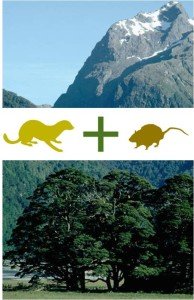 The largest 1080 predator control operation ever attempted in New Zealand will be carried out in Kahurangi National Park later this month, as part of a national effort to combat soaring rat and stoat numbers in the conservation estate.
The largest 1080 predator control operation ever attempted in New Zealand will be carried out in Kahurangi National Park later this month, as part of a national effort to combat soaring rat and stoat numbers in the conservation estate.
This year’s large beech flowering and mast seeding event has created a huge increase in food supplies for rodents, and native birds are expected to be next on the menu as the bumper seed crop runs out.
The Science Media Centre held an online media briefing to explore the science behind the beech mast and ongoing predator control operations, answering questions like:
- What are beech mast events? How often and why do they happen?
- What is the latest data on rat numbers and how is this tracking with predictions?
- What does this mean for pest control efforts? What is the scale of these efforts?
- Which conservation areas will be controlled when? How has this been decided?
- Are rodent numbers affected in urban areas during mast years? Should people do anything in and around their own homes to respond?
Speakers discussed the most up-to-date information from this year’s seed counts, 7000 rat tracking tunnels and 27 predator control operations to see how the Department of Conservation’s “Battle for our birds” is playing out on the ground.
You can view a recording of the briefing, including audio, slides and Q&A, here.
SPEAKERS:
- Dave Kelly – Professor of Biological Sciences, University of Canterbury
- John Innes – Wildlife Ecologist, Landcare Research
- Graeme Elliott – Scientist, Department of Conservation